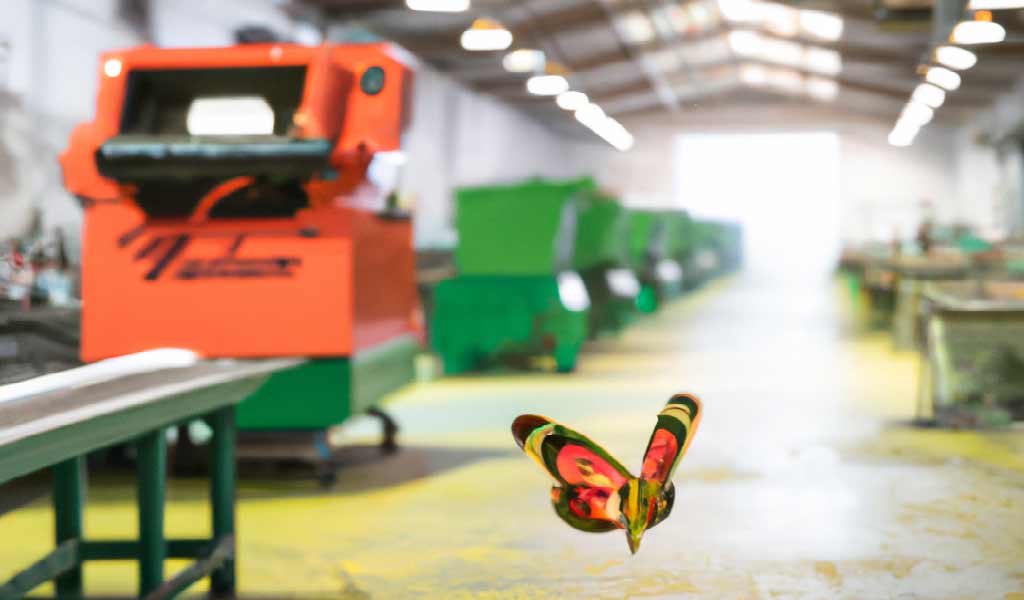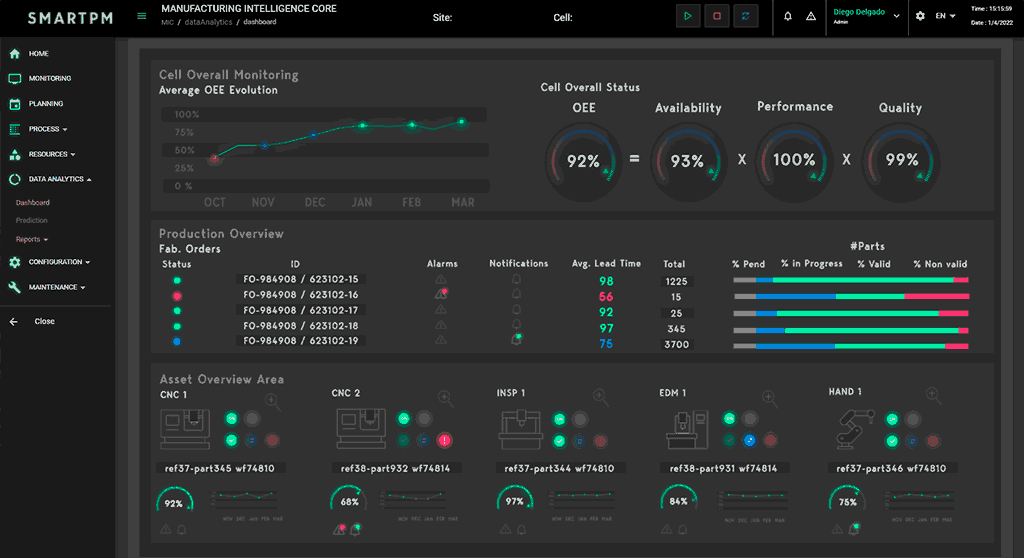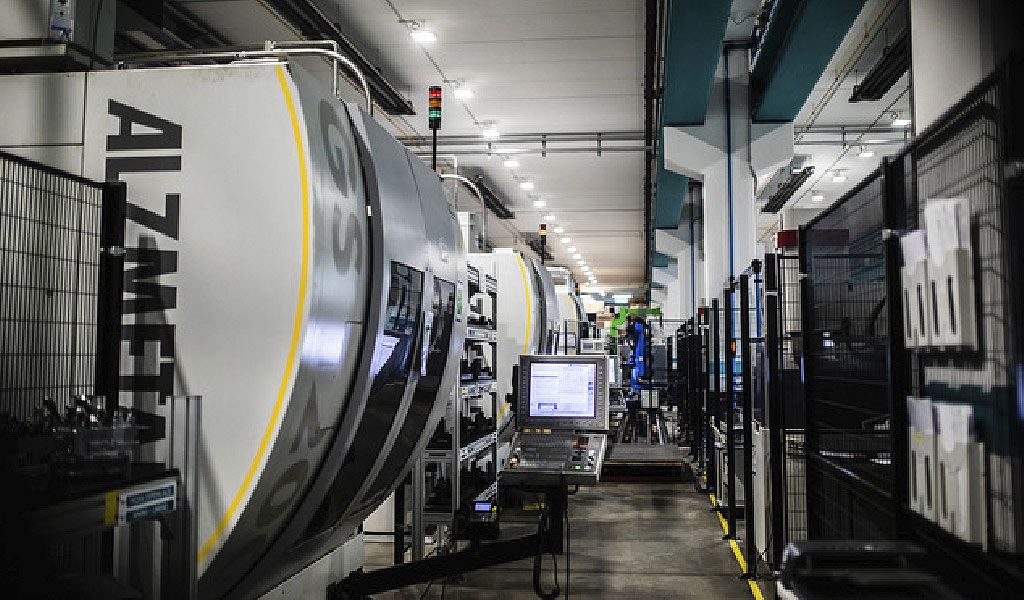The butterfly effect says that any variation that affects the initial conditions of a system can cause large differences in the results. You may not have a butterfly flapping in your shop, but that anarchy can be unleashed in a thousand and one ways: lack of efficiency, lack of visibility on processes, lack of robustness...

In the long run, this translates into higher production costs, lower competitiveness and a greater environmental impact due to inefficient use of resources and energy. If you are facing this situation, in this article we review 6 strategies to follow to reduce anarchy in your shop floor and improve your competitiveness.
1st strategy: Reduce non-value-added operations
This is Lean Manufacturing 101: get rid of everything that is a waste of productivity. For this, traditional techniques such as 5S, Poka Yoke, etc. can be used.
For example, the 5S methodology can be used to eliminate superfluous operations, which contribute nothing to the manufacturing process but can generate anarchy. We are talking about factors such as disorder, dirt, unnecessary movements or verifications, lack of standards, etc. Poka Yoke is another method for detecting and preventing errors in production tasks, which are the main drag on productivity.
Processes should be designed to achieve the finished product by applying the minimum time and effort required to do so, so all these unnecessary processes should be detected and eliminated as far as possible.
2nd strategy: Analyze and improve the robustness of your production processes.
Robust processes offer stability in production that facilitates planning (in terms of time and resources), thus favoring the application of guidelines and tools aimed at maintaining order in the workshop.
Lack of robustness is therefore a source of anarchy on the shop floor, anarchy that generates lower productivity and therefore problems in production planning (which in turn feeds anarchy). A vicious cycle that generates problems such as excessive unproductive lead times, overproduction, poor stock management, excessive defects, etc.
Overproduction can be understood in different ways, such as producing more than the required quantity, designing processes with more capacity than necessary, etc. It is therefore a waste of material, time and other resources that affect the overall shop floor.
Ordering and efficiently managing production processes lays the foundation for further improvements such as automation.
Poor planning in job sequencing or process design can also lead to waiting times on machines or operators, while others may reach capacity limits.
To avoid this, a detailed analysis of the work processes is recommended in order to detect areas for improvement. Standardization of operations and tools makes processes more robust and simplifies production tasks, such as tooling changes.
This improvement process is basic, because once executed it will offer a significant improvement in the management of the workshop, but not only that. Ordering and efficiently managing production processes lays the groundwork for introducing other improvements such as automation to take advantage of all the benefits it offers.
3rd strategy: Increase the visibility you have over the processes.

Information management must be tailored to the needs of the workshop. There is no point in collecting a large amount of data without a strategy. Too much useless data only makes it difficult to access the truly valuable information, which can lead to quality and productivity problems.
There is no point in collecting a large amount of data without a strategy.
It is preferable to have a good system that takes a series of relevant data and processes it in a way that serves to improve production and detect inefficiencies and inconsistencies that generate anarchy in the plant.
This is often caused by having a limited or at worst no view of the shop floor workflows and assets. It is important to have the ability to monitor and control the key indicators of the work processes. If you have that ability to visualize what is happeningyou have the ability to improve production, prevent errors and increase your productivity.
4th strategy: Automate processes but first make sure they are efficient.

Increasing visibility into industrial processes and collecting information in an appropriate way makes data available to you that allows you to improve them even further. You will be able to detect tasks that can be automated to increase productivity and reduce lead times. Always keeping in mind that it is necessary to refine processes before automating, so as not to automate processes that are not efficient.
Automation makes it easier for you to increase your production capacity and quality. You can increase labor hours while reducing errors typically caused by human hands, resulting in manufacturing with greater repeatability and therefore less uncertainty and chaos.
It is necessary to refine processes before automating so as not to automate processes that are not efficient.
Automating also allows you to free up employee workload that can be allocated to other more innovation-oriented tasks, instead of spending time on repetitive and low-value tasks. This way you can maintain production and have a greater capacity for continuous improvement without the need to expand your workforce.
5th strategy: Make the most of your IT-OT environment
The integration between the IT and OT layers can be straightforward if you have a small shop floor. But ideally, you should have a robust IT solution that allows you to scale your production and integrate new processes, products and machines without affecting ongoing production.
Having a complex system where different IT solutions coexist can cause problems and inefficiencies when adding new processes, products or assets. It is preferable to have a system that is able to centralize all these inputs to obtain a better operational capacity.
6th strategy: Commit to developing a strong culture in your organization
There is a phrase attributed to P. Drucker that goes something like "culture eats strategy for breakfast". In other words, it is necessary to integrate changes in the company's culture at all levels in order to encourage change and development to materialize.
While we are on the subject of quotations, here we could paraphrase Homer Simpson to say: "people are both the cause and the solution to problems". Having a strategy, means and tools may be useless if they are not properly integrated with changes in the organization's culture.
People are key players in these processes, but they can play two different roles depending on how the change is managed: they can be the protagonists in the fight against anarchy, or its ally and the greatest barrier to be overcome.
We help you maximize the capacity of your manufacturing processes.
SMARTPM can help you with the optimization and intelligent automation of your industrial processes. Our MIC automation platform for the machining industry helps you to have a global view helps you to have a global vision and management of your production processes in real time.
If you are interested in learning more about MIC or the other process engineering services we offer, please do not hesitate to contact us. contact with us..
The header photo is generated by OpenAI's artificial intelligence.
